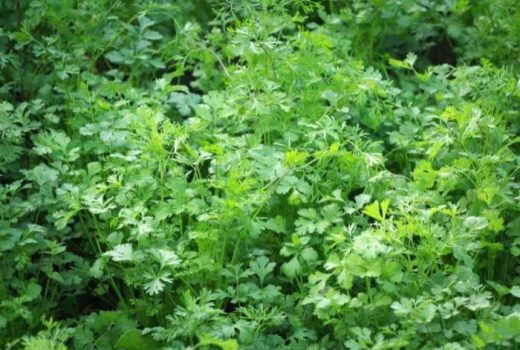Cilantro is a plant from the family Apiaceae. The plant is a perennial herb, growing up to 1–2 m (3 ft 3 in–6 ft 10 in) tall, with smooth, bright green leaves, and clusters of small white flowers. Although the plant was originally native to Central America, it has since become naturalized throughout tropical and subtropical regions. Cutting cilantro is one of the hardest things to do. Once you learn how to do it, however, you’ll be cooking and eating cilantro like a pro in no time.
The best time to prune is when the plant is dormant, usually from late November through January. Remove the dead and damaged branches, and snip off long, straggly leaves. For smaller, more tender leaves, leave the stems attached to the plant. Cut off the ends, and pinch off the bottom.
Cilantro is happiest when you pinch off the nodes, or buds, between leaves and stems. This encourages new growth and makes the stems stronger.
You can expect to get many more harvests from cilantro with this method of cilantro pruning.
What type of blade do you need?
Most blades are either fixed or adjustable.
Adjustable blades are needed in pruning cilantro because they have tines that can be screwed in or out, so they can be used on both thicker and thinner stems.
What type of tool do you need in pruning?
There are three common types of pruning tools
- Basic scissors
- A Paper Bag
- Rubbing Alcohol
Basic scissors:
is inexpensive. They work great for trimming and pruning, but they’re not very durable, so you’ll probably want to replace them after a year or so.
A Paper Bag:
During the first step, as you prune away the stems and leaves of your cilantro plant — which you planted — hold on to the roots and store them in a paper bag.
Rubbing Alcohol:
It immediately kills most microorganisms. If alcohol is still present when the plant heals, it also acts as a fungicide and stops the disease from resurging.
Cilantro Pruning: 3 Easy Steps You Need To Know
Cilantro, also known as coriander, is one of the most popular and commonly used herbs in both eastern and western cooking. But if you’re a beginner cook — either at home or in a professional kitchen — chances are at some point or other you’ve wondered how to cut cilantro properly. This article will show you how to prune cilantro, whether for garnishing dishes or chopping up to add to sauces and dressings.
Pruning is done in three steps.
- The first step is taking out the dead branches
- The second step is thinning the branches
- The final step is cutting off buds that are stunted or diseased
Complete Process of how to Prune Cilantro:
Listed below are three easy ways to prune cilantro.
Lightly Prune:
Break off and discard the cilantro stems. Rinse the cilantro leaves and pat dry. Remove the thickest leaves from the bunch and discard these; the smaller ones will be easier to peel. Place the leaves in the bowl.
Prune the Flowers:
Reducing the number of flowers on cilantro plants is identical to pruning. A flattened cluster of white, pink, or light lavender blooms appears when a cilantro plant nears the end of its life span. Initially, cilantro grows tall and thin. After blooming, cilantro leaves die soon, and the plant grows seeds.
To prune the flowers is to eliminate non-essential parts of a plant, such as those parts which do not flower.
Prune the Coriander seeds:
If you want to cut coriander seeds, you do not need to cut the stems or leaves.
The seeds will be ready after three months once you plant them. A cilantro seed case appears on the cilantro plant when it starts turning brown. So when you see that they have produced seeds, start harvesting.
Conclusion
Cilantro pruning is a technique to divert new growth from mature cilantro (coriander) plants in order to promote more leaves, and thus more cilantro. The technique involves cutting off new shoots from the plant.
Once you learn how to prune cilantro the right way then the harvest season of your cilantro plants is going to be longer. The right time to prune cilantro promotes its productivity as well as delays its bloom. Coriander seeds are not developed until after the cilantro plant is fully harvested. You can extend that season for a month or more in most cases just by pruning at the right time. Therefore, cilantro pruning, especially when done regularly, encourages the plant to produce more leaves, rather than stalks.

